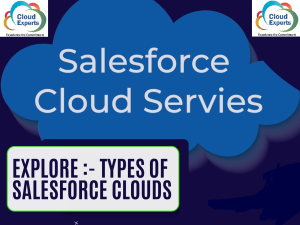Could you provide a description of an erection pump
Could you provide a description of an erection pump? Learn more about men’s health and the use of erection pumps by visiting this informative website:

These days information security and privacy is the main pressing issue for everybody and everybody maintains that their information should be in safe hands, so this blog will provide you with a short outline of how information security has been taken care of in Salesforce.
1. Association-Level SecurityThe association level comes at the association level when we need to guarantee which client can sign into Salesforce. We safeguard our information at the broadest level here and this should be possible by making and overseeing clients, setting secret word approaches, and restricting when and where clients can sign in.
A portion of the ways of controlling access at the association level:
Secret phrase strategies.
Client secret phrase lapse.
Client secret phrase resets.
Login endeavors and lockout periods.
Whitelist Believed IP Reaches for the Association.
Limit Login Access by IP Address Utilizing Profiles.
Limit Login Access by Time.
2. Profile Level Security
Profile level security gives the security one can apply on the item and fields, application a client approaches, page designs, and so on. Profile level essentially gives the CRED activities to perform or allot to the client.
We can set profile level security through the:
Profile Authorization Set:
The profile is an assortment of settings that characterize what information and highlights a client can access over the stage. One has some control over admittance to objects, applications, VF pages, page formats, and so on.
Consent Set:
A consent set is a copy of profiles that are utilized to give extra admittance to objects, tabs, applications, and so on to a client. With consent sets we can’t lessen any entrance, it must be utilized to concede extra admittance to a client.
3. Field Level Security
Field-level security alludes to the security we apply to the fields. It infers whether a client can alter, see or erase the incentive for a specific field.
Field-level security can be set through:
Profile and Authorization set(Under Clients area)
Field Availability (Under the Security segment)
Object Chief
Page Design
Field Level Security using Profile and Authorization Set
Go to Arrangement
In the fast track down box, look for the profile/authorization set. The two areas go under the Clients segment
Select a specific profile and look down up to norm or custom field-level security.
Click on the View connection of any article, it will divert you to the page where all fields are available and connected with that picked object.
Click on alter and set field-level security according to two decisions accessible, i.e: Read admittance or Alter access
Field Level Security through Field Availability
The field openness choice goes under security in the arrangement.
Pick any of the items for which you need to see or alter field availability.
Select the ‘View by fields’ choice and after that select the field for which you need to see or alter openness.
This will show a rundown of fields as indicated by the profiles and you can set openness according to their profiles and relegate record types.
Field Level Security through Item Administrator and Page Format
From Arrangement, click object administrator and select any item.
In the fields and relationship area, select any of the fields on which you need to see or alter availability.
Field-level security gives us two choices if there should arise an occurrence of Page design:
Noticeable
Peruse As it were
Field Level Security through Page Design
We can likewise apply field-level security through page design.
In object chief snap on any article and select page design structure in the left area.
Select any of the accessible page formats.
Go to any field and snap on the wrench symbol for applying field properties on UI.
By clicking, a spring-up window seems which shows two choices:
Read Only
Required
4. Record Level Security
This level gives us the security we can apply over records in Salesforce Organization. Using record-level security, one can characterize the entrance of records to the clients lying at various profiles or jobs all through the Salesforce organization.
There are the accompanying ways we can divide records among clients:
OWD (Association-Wide Defaults)
Job Pecking order
Sharing settings
Manual Sharing
Association Wide Defaults
OWD advises us to record security for each item. It is the gauge as far as record-level security. One must continuously set the OWD as prohibitive and open up the entrance with different arrangements accessible for a record level of security.
OWD segment goes under sharing settings in the security area in the arrangement.
Job Order
Job order in Salesforce implies the client who will be on the top has admittance to every one of the clients underneath. It follows a top to down approach. The client will not approach the above clients however the clients who are beneath his level according to the job pecking order characterized. Job progressive system consequently allows admittance to the clients.
Send Email to Salesforce Deals Cloud Information from Promoting Cloud Utilizing Import and Computerization Channel Action
Sharing Principles
As referenced above, job pecking order follows the top to down approach though, Sharing standards give record-level admittance to the people who are at a similar level in the Job progressive system. Sharing guidelines are utilized to give even access. Sharing principles can be applied to norm and custom items.
We can dole out or make sharing guidelines/sharing settings by exploring the OWD segment and underneath there is a part where we can make a sharing standard for each item present in the organization.
Manual Sharing
In this, we can share records physically with singular clients, jobs, or public gatherings. It is accessible to the record proprietors, their chiefs, and the framework administrator.
If a client doesn’t approach any record which is possessed by some other client then the proprietor of the record can physically impart the record to the client.
Salesforce security is a critical component of protecting sensitive data. Salesforce provides a comprehensive set of security features that enable businesses to protect their data from unauthorized access, loss, or theft.
Implementing best practices such as using strong passwords, implementing multi-factor authentication, and restricting access to sensitive information is essential in ensuring that Salesforce data is secure.
Complying with data protection laws such as GDPR, CCPA, and HIPAA is also essential in protecting sensitive information.
By implementing these best practices, businesses can ensure that their data is secure and protected from unauthorized access, loss, or theft.
To Know More Click Here…
Could you provide a description of an erection pump? Learn more about men’s health and the use of erection pumps by visiting this informative website:
There are five primary reasons for the development of heart failure. the healthy man blog to learn more about the main causes of impotence and
Does erectile dysfunction hinder the ability to masturbate? Certainly! Here’s a phrase that describes the main point of the article: “Discover the truth about erectile

IT Asset Management IT Asset Management – What Is It? IT Asset Management (ITAM) is a way to keep track of all your IT stuff,

Top 3 Ways to Optimize Procurement A study by Riskmethods found that 79% of companies experienced supply chain disruptions, resulting in a loss of 4%

Why is 3-Way Matching is Important in Purchasing? 3-way matching is an important process in purchasing to ensure accuracy, completeness, and compliance of invoices with

What is Indirect Procurement? 5 ThingsYou Need To Know What is Indirect Procurement? I talked about it with Procurement Expert Richard Beaumont on The Supply

RFI Vs RFP Vs RFQ In today’s business world, there are many options for enterprises looking to switch immigration providers. They consider factors like service,

5 Reasons Why eAuctions Drive Is Better Savings eAuctions are online discussions between a buyer and a group of sellers. Procurement specialists can use eAuctions

What is Category Management in Procurement? Category management is a way of organizing and managing similar products or services together. It helps organizations make their

17 common challenges in procurement management and their solutions Procurement can be complicated and challenging to manage due to various factors such as regulations and

The Ultimate Guide to the Top 16 Procurement KPIs. Nowadays, businesses want procurement teams to do more than just save money. They want them to

ProVen Revolutionary Procurement Software Revolutionary Procurement Software : Revolutionary procurement software is here! It’s advanced, flexible, easy to use, affordable, highly secure, and can be

ProVen The Next Generation Procurement & Vendor Management Solution – SRM Procurement Challenges: The current purchase process is both inefficient and lacks transparency. Floating RFQs

4 Benefits You Need To Keep In Mind While Choosing Right Salesforce Partner Salesforce is a strong stage that can assist organizations with smoothing out

6 Reasons To Hire Salesforce Developer For Your Business Is it safe to say that you are here since you need to find the reason

5 Major Benefits of Hiring a Salesforce Consultant What is the Market Share of Salesforce? Salesforce’s worldwide portion of the overall industry and income keeps

5 Ways to Effectively Manage Ideas on Salesforce Experience Cloud The thought creation process is an excursion with many exciting bends in the road. Thoughts

5 Salesforce Integrations That Can Transform Your Daily Business Operations If we discuss Salesforce, there are regions in which it adds to the business. From

Salesforce Marketing Cloud – 8 Ways to Maximize Your Marketing Potential In the present quick-moving advanced world, organizations should stay aware of the most recent

Sales Cloud Related 7 Key Features You Must Know What is Salesforce Sales Cloud? With the steadily expanding request, there is a consistent requirement for

4 Major Points How Salesforce Ensure Data Security and Privacy? Introduction These days information security and privacy is the main pressing issue for everybody and

6 Major Insights How Salesforce Implementation Can Improve Your Sales Process? Introduction Throughout the long term, Salesforce has been thought of as one of the

10 Leading CRM Software That Will Rule In 2023 Introduction Customer relationship management software is the core of any developing business these days as all

The 15 Types Of Clouds In Salesforce & Their Features Introduction Salesforce, as a comprehensive Customer Relationship Management (CRM) platform, offers a wide range of

5 Factors – Why Salesforce Is The Best And Desired CRM Solution? Introduction Salesforce has earned a reputation as one of the leading Customer Relationship

Major 6 Reasons Why Salesforce Is In So Much Demand These Days Introduction We have witnessed that Salesforce is in demand and got popularity in

6 reasons why Salesforce used AI in its CRM offerings. Introduction Salesforce, the market leader in Customer Relationship Management (CRM), has harnessed the power of Artificial Intelligence

Major 6 Future Outlook For Salesforce In The CRM Market? Introduction Salesforce has established itself as the dominant force in the Customer Relationship Management (CRM)

Top 6 Benefits Customer Will Get From The Salesforce AppExchange Introduction Salesforce’s AppExchange is an extensive marketplace of applications and integrations that provides customers with

Major 6 Industries are benefited the most from Salesforce’s CRM Solutions Introduction Salesforce’s Customer Relationship Management (CRM) solutions have proven to be valuable across a

6 Reasons Set Salesforce Apart From Other CRMs Introduction In a crowded market of Customer Relationship Management (CRM) providers, Salesforce has managed to carve out

Top 5 Reasons for Salesforce’s Market Leadership Market Share Of Salesforce Introduction Salesforce has emerged as the market leader in Customer Relationship Management (CRM), revolutionizing

Top 5 Reasons and The Journey Of Salesforce For Becoming The No 1 CRM Introduction In the highly competitive world of Customer Relationship Management (CRM),

How Is The Future On Salesforce? Introduction : In today’s fast-paced digital landscape, businesses are constantly striving to stay ahead of the competition and maximize

19 Major Benefits Of Using Salesforce CRM? Introduction: In today’s highly competitive business landscape, maintaining strong customer relationships is crucial for success. That’s where Salesforce,

What Exactly Does Salesforce Do? Introduction : Salesforce is a leading Customer Relationship Management (CRM) platform that offers a wide range of cloud-based services to
Epic Match: MI vs. SRH – T20 Titans’ War in the IPL 2023 In the T20 Indian Premier League (IPL), the Mumbai Indians (MI) and

6 Ways CRM Helps You Grow Your Business Customer Relationship Management (CRM) software can play a crucial role in helping businesses grow and thrive. Here are